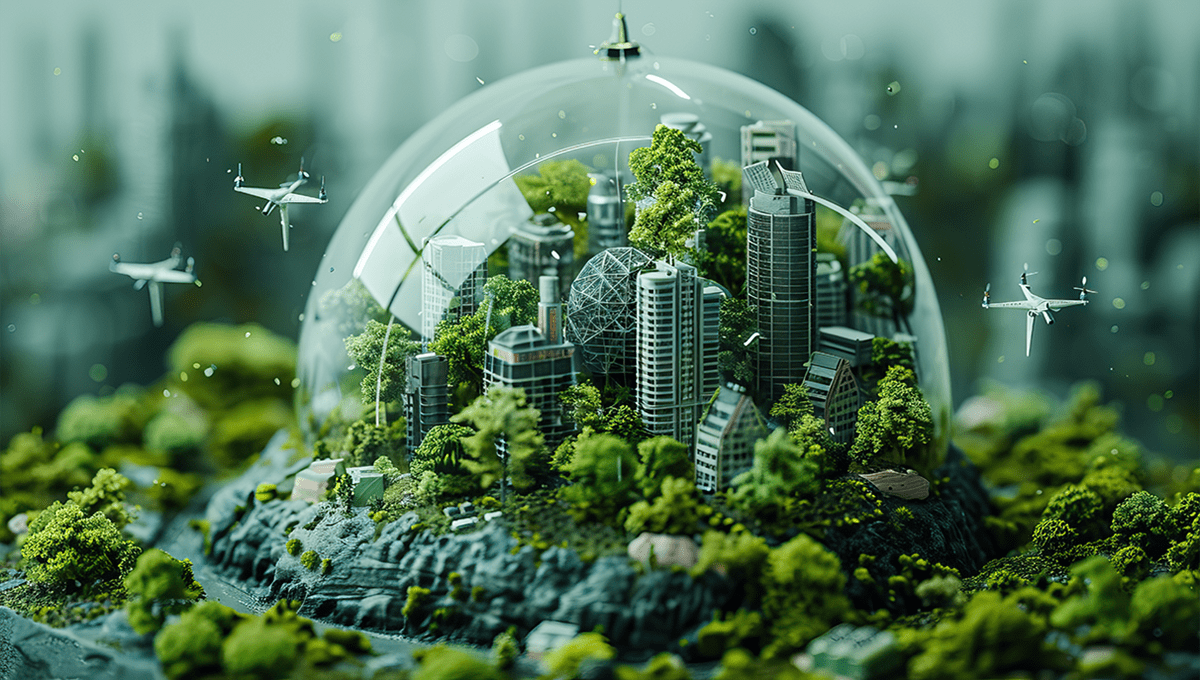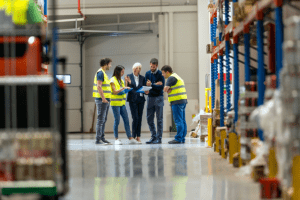You are here: Home / Leadership Insights / Business Operations / Ecological trends for 2025 and beyond

Ecological trends for 2025 and beyond

Editor’s note: This is the first installment of an annual 4-part series on the trends impacting small and midsize businesses. Here, we study ecological trends for 2025.
Businesses are increasingly aware of the importance of sustainability as part of their long-term strategy.
In recent news that shocked the senses, Microsoft announced plans to source energy from Three Mile Island, the site of America’s most infamous nuclear disaster. The purchase agreement calls for Microsoft to buy 100% of the plant’s output over the next 20 years, and signals a shift in the nation’s energy consumption — the need to fuel the AI aspirations of titans such as Microsoft, OpenAI, Google and Nvidia. Not to be outdone, Google and Amazon have announced plans to invest in small, “modular” reactors to satisfy their energy requirements.
The recent surge in energy demand puts more strain on an electric grid that’s already taxed by economic growth, expanding mobility, consumption from EVs and industrial production. While the utilisation of cleaner fuels is on the rise, the cold hard truth is that renewables still command a price premium that some industries and consumers are unwilling to pay. It’s becoming clear that dirty fuels will remain the dominant source of electricity generation over the next decade. Today, solar and wind account for 12% of energy production.
Energy Generation

Source: Ember
Energy capacity
The Energy Information Administration (EIA) considers various business cases, but its more aggressive projections assume energy consumption will double by 2050. However, even a 60% increase is likely to strain the system. There is simply not enough energy production and storage capacity to satisfy surging demand. The U.S. and other countries will not only need to adopt renewables but also seek out other storage sources, such as batteries, which only represent a small proportion of capacity.
Progress by region
The Paris Agreement of 2015 set ambitious goals to limit global warming to well below 2 degrees Celsius above pre-industrial levels. While AI energy consumption may be concentrated in the U.S. and China, it’s hard to imagine its burgeoning demand was fully recognised in the Paris Accords. While some nations have made strides in reducing greenhouse gas emissions, others have lagged.
- United States: Despite re-entering the Paris Agreement, the U.S. faces political and economic hurdles, reducing emissions by only 23% since 2005.
- United Kingdom: Aiming for net-zero emissions by 2050, the UK has invested heavily in renewable energy like offshore wind. It has reduced greenhouse gas emissions by 46% since 1990.
- Germany: Transitioning away from coal and expanding renewable energy, Germany generated 45% of its electricity from renewables in 2022.
- France: Implementing carbon taxes and investing in nuclear energy, France has decreased emissions by 55% since 1990.
- China and emerging economies: As the world’s largest emitter, China’s emissions have increased by 55% since 1990. Emerging economies like India and Brazil face pressure to reduce emissions while addressing development challenges.
The shifting business imperative toward sustainability and ESG
And yet, providing enough energy to power our EVs and robots in the future is not even our greatest sustainability problem. Economies need population growth to thrive, but our planet cannot absorb the waste of the current population. Countries, businesses and individuals are grappling with the pressing challenges of climate change, resource depletion, and biodiversity loss.
Energy Needs by Sector

Source: OpenAI
The cost of weather events
A consequence of climate change is the frequency and severity of large-scale weather events. Combined, Hurricanes Helene and Milton are expected to cost more than $100 billion — two of the costliest weather events in U.S. history. Over 200 lives were lost in the disaster. Zillow now publishes climate risk ratings for homes, and buyers are evaluating weather events with greater weight, especially as insurers pull out of many markets. In California, millions of residents cannot buy fire insurance from private insurance companies.
U.S. Billion-Dollar Weather Events

Source: NOAA
ChatGPT to the rescue
ChatGPT is useful in creating custom continuity plans based on the disparate variables of a business. Utilise prompts such as industry, locations, weather patterns, number of employees, tech stack, back-ups, and safety protocols to build a draft outline.
Evolving ESG expectations: A new era for businesses
For small and midsize businesses (SMBs), understanding and integrating Environmental, Social, and Governance (ESG) principles is not just about compliance and alignment with their larger customers — it’s a strategic advantage in the war for talent and an important ingredient for long-term success.
Yet ESG has proven controversial over the last year, as some large companies publicly scaled back their sustainability efforts, and states such as Florida set limits on DEI (diversity, equity and inclusion) initiatives. Here, we consider sustainability efforts within the larger umbrella of ESG.
Investors are increasingly requiring companies to disclose their ESG performance. ESG assets under management reached $45 trillion globally in 2022. A McKinsey survey found that 80% of consumers are willing to pay a premium for sustainable products.
A Deloitte study found that 83% of younger workers believe companies should act on climate change. A strong ESG profile enhances employee engagement and can attract top Millennial and Gen Z talent.
10-step business plan for sustainability
- Foster a culture of sustainability
- Use ChatGPT to create a custom contingency plan.
- Engage employees with sustainability initiatives and training.
- Promote eco-friendly habits like reducing paper usage and conserving energy.
- Reduce energy consumption
- Implement energy-efficient technologies (LED lighting, smart thermostats, etc.).
- Upgrade equipment to more energy-efficient models.
- Sustainable supply chain management
- Source materials from suppliers committed to environmental standards.
- Engage in local sourcing to minimize carbon footprint from transportation.
- Adopt circular economy practices
- Design products for longer lifespans and recyclability.
- Reuse, refurbish and recycle materials whenever possible.
- Minimize waste production
- Set up recycling programs and composting systems for organic waste.
- Reduce packaging or switch to eco-friendly packing materials.
- Offset carbon emissions
- Invest in carbon offset programs like tree planting or renewable energy projects.
- Calculate and monitor your company’s carbon footprint to target reductions.
- Promote sustainable transportation
- Encourage employees to use public transit, carpool or bike.
- Use electric or hybrid vehicles for company fleets.
- Implement water conservation strategies
- Install low-flow fixtures, water-efficient appliances and leak detection systems.
- Reuse gray water for landscaping and non-potable uses.
- Support renewable energy use
- Install solar panels or wind turbines for on-site renewable energy generation.
- Purchase renewable energy credits (RECs) to support clean energy development.
- Use sustainable product design and packaging
- Design products that use less material, are more energy-efficient or have lower environmental impact.
- Move toward biodegradable, reusable or minimalistic packaging solutions.
Final thoughts
The coming decade presents both challenges and opportunities for SMBs. By proactively addressing environmental and sustainability issues, businesses can attract younger workers, enhance their reputation and improve their competitiveness. Remember: ESG is not just a compliance requirement — it’s a strategic tool for growth and talent acquisition. Embracing ESG principles can help SMBs navigate the future successfully while contributing to a more sustainable world.
For more information on sustainability, check out these resources
IBM’s Sustainability Trends
ERM’s Sustainability Trends for 2024 and Beyond
MSCI’s Climate and ESG Trends
U.S. Chamber of Commerce: ESG and Climate Change
Energy Star Portfolio Manager
EcoVadis Sustainable Supply Chain Management
Terracycle Circular Economy Platforms
Salesforce Sustainability Cloud
Aqueduct by the World Resources Institute
Carbon Trusture of business is here, and AI powers it. The only question left is — are you ready to leap?)
Originally published on Vistage Research Center.
7 Laws of Leadership Guide
As a CEO, success hinges on the decisions you make. To consistently rise to this challenge, this guide offers essential insights drawn from over 65 years of coaching business leaders. These laws provide a framework for effective decision-making, helping you navigate uncertainty and evolve from a good decision-maker into a great one.




